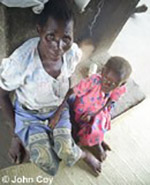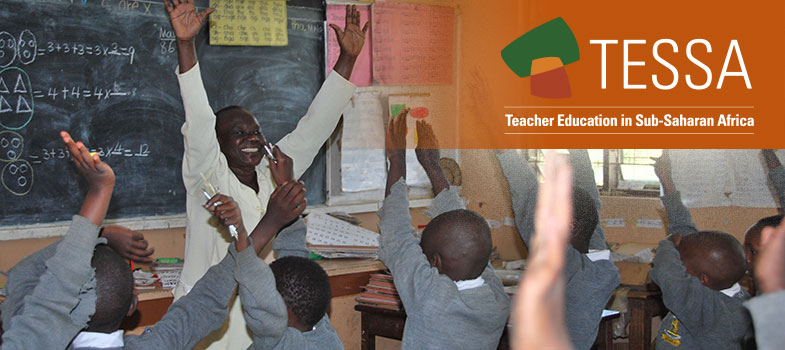Resource 1: HIV and AIDS in Africa/Ghana
![]() Background information / subject knowledge for teacher
Background information / subject knowledge for teacher
http://www.avert.org/ [Tip: hold Ctrl and click a link to open it in a new tab. (Hide tip)]
This is the web homepage of an organisation called AVERT, an international HIV and AIDS charity based in the UK, with the aim of AVERTing (preventing) HIV and AIDS worldwide.
You will find a good deal of useful information for teachers on this site.
The Ghana AIDS Commission (GAC) has an informative website at http://www.ghanaids.gov.gh
or from
The Ghana AIDS Commission
PO Box CT 5169
Cantonments
Accra
GHANA
Tel: +233-(0)21-782262/63
Fax: +233-(0)21-782264
The following organisations are for People Living With Aids (PLWA). They would probably be very helpful if you wanted resource people to come and talk to your pupils and the school community.
You need help?
There are associations of people living with HIV/AIDS where people care about themselves as individuals and as a community. There are also care and support groups. Some of these are:
Wisdom Association
Greater Accra
Babara Opoku:
Tel: 0244-440494
Women United Against AIDS in Ghana
Greater Accra
Janet Thomson:
Tel: 021-810 832
The AIDS Support Association
Greater Accra
Gladstone Attipoe:
Tel: 0244 464 009/027-7448156
The AIDS Support Association
Greater Accra/Tema
Tel: 024-4684009
Animwaa Microcare Hospital
Ashanti-Kumasi
Precious Life AssociationAshanti-Kumasi
Dinah Dabere: Tel: 024-4779469
St. Dominic’s HospitalEastern
Most Rev. Palmer Buckle, Tel:027-546330
Agomanya Wisdom AssociationEastern
Theresa Tetteh: Tel: 024-4956872
St. Mary’s Hospital
Brong Ahafo
Fr. Dominic Assuahene: Tel: 061-8160026
The Hope Express
Central Region
c/o Central Regional Hospital, Cape Coast
Catholic Relief ServiceUpper East
Tel: 072-22170
Catholic Relief Service Upper West
Tel: 0736-22083
Life Relief Services
Western
Tel: 020-8160026
HIV and AIDS useful facts and statistics for Sub-Saharan Africa
The AVERT site gives figures which your pupils may ask about. It also has a very useful guide to understanding the statistics.
Here is the summary of statistics for Africa. You will find more details for your own country on the website.
Sub-Saharan Africa is more heavily affected by HIV and AIDS than any other region of the world. An estimated 24.5 million people were living with HIV at the end of 2005 and approximately 2.7 million new infections occurred during that year. In just the past year the epidemic has claimed the lives of an estimated 2 million people in this region. More than 12 million children have been orphaned by AIDS.

The extent of the epidemic is only now becoming clear in many African countries, as increasing numbers of people with HIV are becoming ill. In the absence of massively expanded prevention, treatment and care efforts, it is expected that the AIDS death toll on the continent will continue to rise. This means that the epidemic's impact on these societies will be felt most strongly in the course of the next ten years and beyond. Its social and economic consequences are already widely felt, not only in the health sector but also in education, industry, agriculture, transport, human resources and the economy in general.
How are different countries in Africa affected?
HIV prevalence rates vary greatly between African countries. In Somalia and Senegal the prevalence is under 1% of the adult population, whereas in South Africa and Zambia around 15–20% of adults are infected.
In four southern African countries, the national adult HIV prevalence rate has risen higher than was thought possible and now exceeds 20%. These countries are Botswana (24.1%), Lesotho (23.2%), Swaziland (33.4%) and Zimbabwe (20.1%).
West Africa has been less affected by HIV, but the prevalence rates in some countries are creeping up. Prevalence is estimated to exceed 5% in Cameroon (5.4%), Côte d'Ivoire (7.1%) and Gabon (7.9%).
Until recently, the national prevalence rate has remained relatively low in Nigeria, the most populous country in Sub-Saharan Africa. The rate has grown slowly from below 2% in 1993 to 3.9% in 2005. But some states in Nigeria are already experiencing HIV infection rates as high as those now found in Cameroon. Already around 2.9 million Nigerians are estimated to be living with HIV.
Adapted from: Avert, Website (Accessed 2008)
3.Using role play and scenarios



